Superfamily Aeolidioidea | Scientific name Pteraeolidia ianthina Rank Species | |
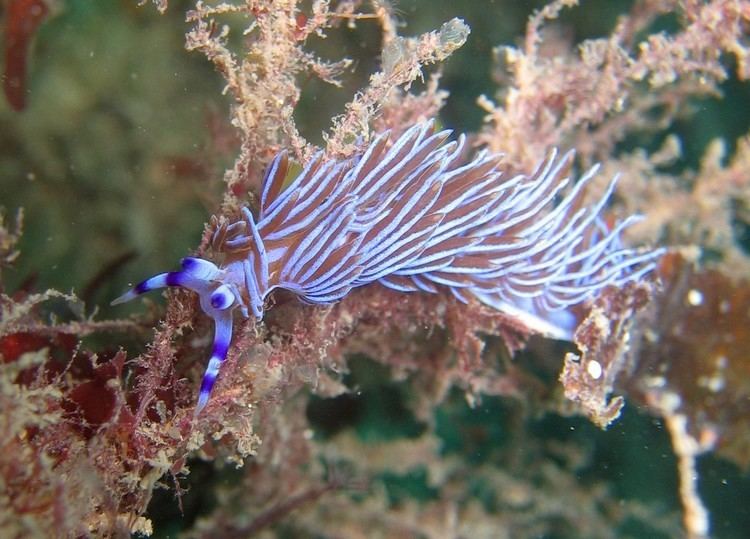 | ||
Similar Hypselodoris, Glossodoris, Phyllodesmium, Flabellina, Nembrotha | ||
Creature of different form pteraeolidia ianthina
Pteraeolidia ianthina is a sea slug, an aeolid nudibranch, a marine gastropod mollusc in the family Facelinidae.
Contents
- Creature of different form pteraeolidia ianthina
- Distribution
- Description
- Symbiosis with Dinoflagellates
- References
Distribution
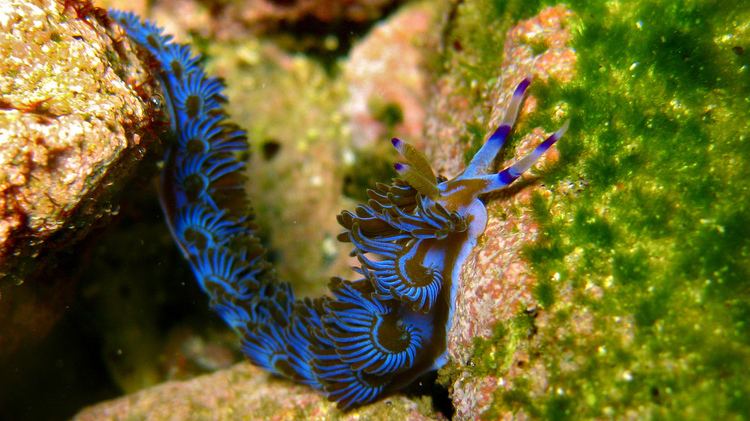
This species is found in Sydney Harbour, New South Wales (NSW), Australia, and does not occur outside NSW. Recent research shows that it is a complex of more than one species.
Description

Pteraeolidia ianthina, one of the most common aeolids found, is often called a "blue dragon" by Eastern Australian divers because of its close resemblance to a Chinese dragon. It is one of the most common aeolid nudibranchs found in Eastern Australia. It can inflict a painful sting to humans.

The body color of this species is translucent tan, but the cerata, which vary from dark purple to lavender to golden brown, give the nudibranch most of its distinct color, green specimens are not uncommon.
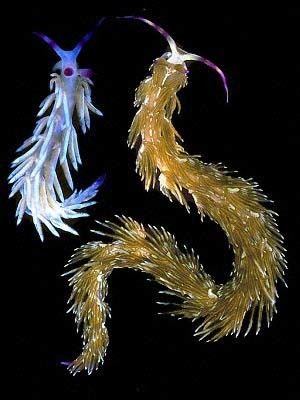
The slug is very elongated (7 cm) with many clusters of medium-large sized cerata along the length of the body. The fat rhinophores and the long cephalic tentacles have at least two dark purple bands that stand out. The tips of the cerata contain nematocysts.
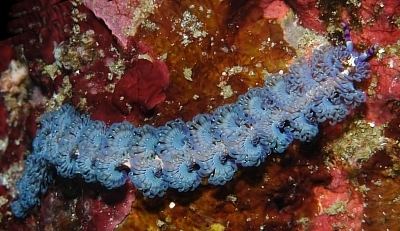
Algal zooxanthellae of the genus Symbiodinium derived from the food of these animals continue to photosynthesise inside the body and give rise to brown and green pigments. Symbiodinium, together with the nematocysts, are presumed to be derived from coelenterate prey. These Symbiodinium occur within vacuoles in host cells derived from the endoderm.
Young specimens are much shorter, have fewer cerata, and are often mistaken for other nudibranch species.
Symbiosis with Dinoflagellates
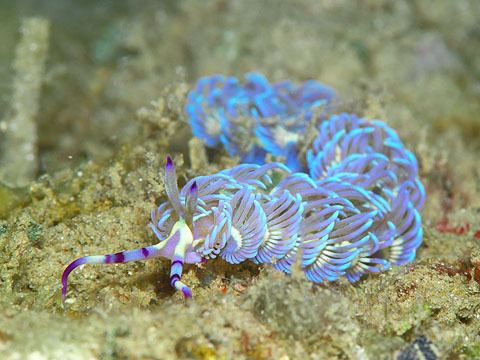
This sea slug feeds on hydroids which contain Symbiodinium, microscopic dinoflagellates that are photosynthetic. The microscopic Symbiodinium acquired from the hydroids are 'farmed' in the sea slug's digestive diverticula, where the Symbiodinium photosynthesizes sugars to be used by the slug. The slug gains enough photosythetically derived sugars to sustain it without feeding.
